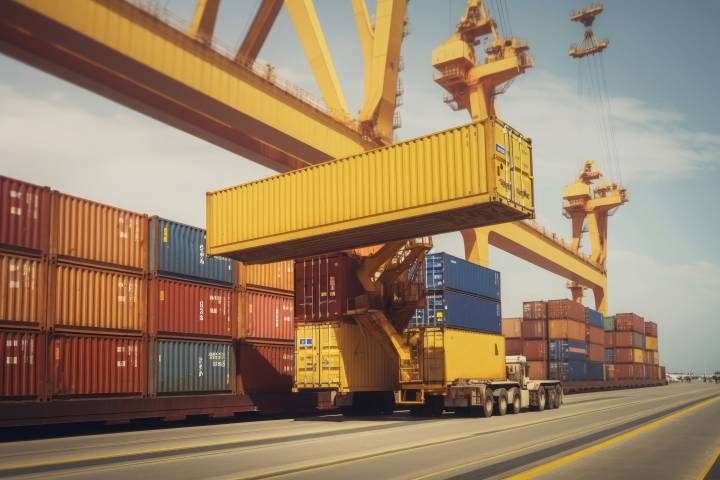Sustainable living isn’t just a buzzword anymore – it’s a lifestyle shift. In recent years, there’s been a growing trend towards finding innovative ways to repurpose and recycle materials to live and work in more eco-friendly ways. One standout solution in this movement is the repurposing of shipping containers. From providing affordable housing to acting as pop-up retail spaces, the humble yet durable shipping container is revolutionising the way we live, work, and interact with our environment.
This exploration dives deep into the world of modified shipping containers, revealing the myriad of ways they are transforming various sectors. Whether you’re an eco-conscious homeowner, a startup entrepreneur, or an architect looking for sustainable design options, you’ll find valuable insights here about an environmentally savvy trend that’s making waves worldwide.
What is a Modified Shipping Container?
Initially conceived as a sturdy means of transporting goods across the globe, shipping containers have a lifespan of around 20 years when used in their traditional form. However, a modified shipping container, or ‘cargotecture’, is a repurposed container that can serve a multitude of functions after its shipping days are over. Driven by the quest for sustainability and innovation, architects, designers, and creatives are picking up where the shipping industry leaves off, turning these steel giants into structures with new purposes in urban and rural landscapes alike.
The mass production of shipping containers has made them readily accessible and relatively affordable compared to traditional building materials, making them popular with both designers and clients looking for cost-effective solutions. Beyond this, their innate design – durable, weatherproof, and stackable – makes them a versatile blank canvas for customisation.
Sustainable Living: How Containers are Transforming Homes and Communities
One of the most exciting applications of modified shipping containers is in the realm of sustainable housing. These structures are finding their place in both temporary and permanent housing solutions, not just as belated stop-gaps after major disasters but also as purposeful eco-friendly abodes.
A New Lease on Life
The rise of container homes isn’t simply a fad; it’s a recognition of the need for more sustainable living spaces. These homes offer several advantages, including mobility, quick construction times, and flexibility in design. By using used containers, homeowners contribute to the reduction of waste, upcycling large steel containers that would otherwise sit in ports or landfills.
Beyond the Individual Home
Container homes aren’t just a one-off solution for individual living but are also transforming entire communities. Cities facing housing shortages due to population growth and urbanisation are turning to container homes as a scalable, affordable housing option. Not only do these communities address immediate housing needs, but they also set a precedent for sustainable development in the long term.
The Business Angle: How Containers Are Used in Retail and Office Spaces
It’s not just about living spaces; modified containers are also making an impact on businesses. Small business owners and startups are using these spaces to their advantage, thanks to their cost-effectiveness and innovative design possibilities. For example, using insulated storage containers can provide businesses with secure and climate-controlled environments for sensitive materials, improving their operational efficiency.
A Retail Revolution
Container retail spaces, or ‘cargotailers’, are popping up everywhere, from farmers’ markets to music festivals. These compact, eye-catching structures provide entrepreneurs with a physical presence that’s unique, easily transportable, and customisable, without the overhead costs of a traditional brick-and-mortar store.
Office Spaces Made Modern
Businesses around the world are catching on to the benefits of using containers for office space, especially in response to the changing dynamics of work. These spaces are flexible and can be moved or expanded as businesses grow or change. With thoughtful design, they can also provide an inspiring, eco-friendly workspace that attracts modern, sustainability-minded employees.
Design and Architecture Innovations
The design possibilities of modified shipping containers are virtually limitless. Creativity knows no bounds when it comes to turning a rectangular steel box into a work of architectural art.
Pushing Boundaries
Architects are taking container design to new heights, both figuratively and literally. By stacking and combining containers, they can create multi-level buildings that satisfy various needs. The need for traditional structural elements is often eliminated thanks to the inherent strength and rigidity of the containers.
Integrating Technology
Innovations in technology have further expanded the scope of container design. From smart home systems to energy-efficient designs, containers can now be equipped with the latest tech to maximise comfort and utility.
Challenges and Considerations
While the benefits of container modifications are clear, there are also challenges and considerations to take into account.
Regulatory Hurdles
One of the significant hurdles in the way of widespread adoption of container homes and structures is the building codes and regulations that can often be ill-equipped to assess the safety and sustainability of these structures. Engaging with local authorities and building professionals is crucial to ensure that container-based projects meet all necessary standards.
Environmental Impact
On the surface, container homes appear to be an eco-friendly alternative to traditional housing. However, the process of converting a container into a liveable space requires additional materials and energy, which can have an environmental impact. It’s essential for the industry to continue to innovate and find ways to mitigate these effects while promoting sustainability.
The Future of Modified Shipping Containers
The trajectory of the container trend suggests that we are witnessing just the tip of the iceberg. With advancements in technology, growing environmental consciousness, and an increasing demand for adaptive building solutions, containers are likely to play an even larger role in the future.
Integration in Mainstream Architecture
As container design becomes more sophisticated and accepted, we can expect to see them integrated into mainstream architecture in more innovative ways. From upscale housing to commercial developments, containers offer a unique aesthetic and functional appeal.
A Role in Disaster Relief and Humanitarian Aid
The rapid assembly and deployment of container-based structures make them a perfect solution for emergency shelters and disaster relief efforts. From temporary medical clinics to rapid-response housing, modified containers are set to make a significant impact in this critical sector.
Conclusion
The utilisation of modified shipping containers embodies a spirit of innovation and sustainability that is becoming increasingly vital in our rapidly changing world. With the ability to transform not only spaces but also entire communities, containers are more than just a cost-effective construction option; they are a catalyst for change in the way we build and live.
The enthusiasm surrounding container modifications presents an exciting opportunity for collaboration and exploration among professionals and enthusiasts from a variety of fields. By sharing knowledge and pushing the boundaries of what’s possible, we can continue to unlock the potential of this resurgent architectural form.
We hope you found this blog post on The Ultimate Guide to Modified Shipping Containers: Unpacking a Global Trend, useful. Be sure to check out our post on Transporting Shipping Containers by Various Means for more great tips!
Have Experience in the Moving Industry? Want an Additional Income Stream? Work With All Around Moving!
The Work With Us program at All Around Moving allows you to run your own Relocation Contractor company from anywhere in the United States. Click here to learn more.






